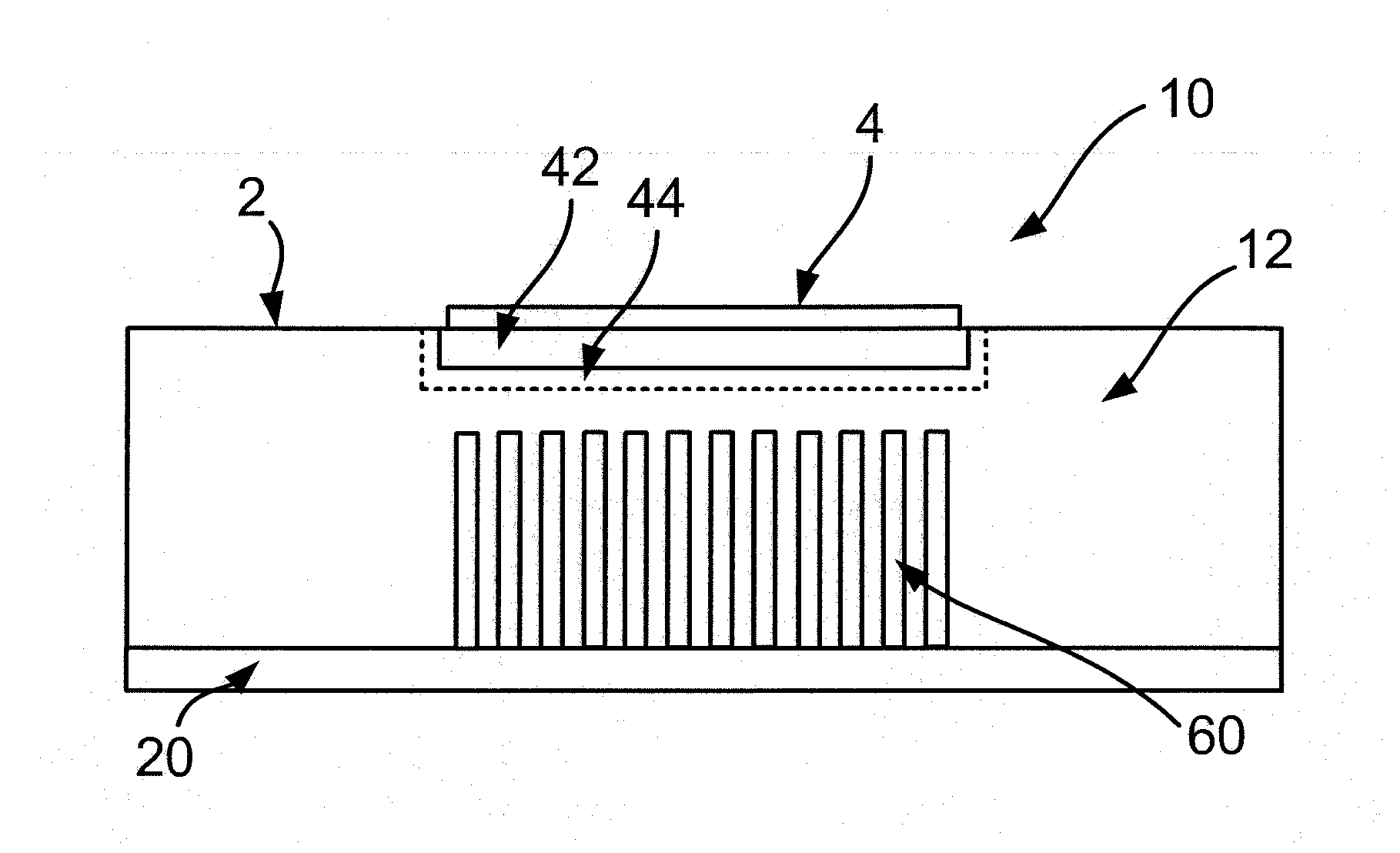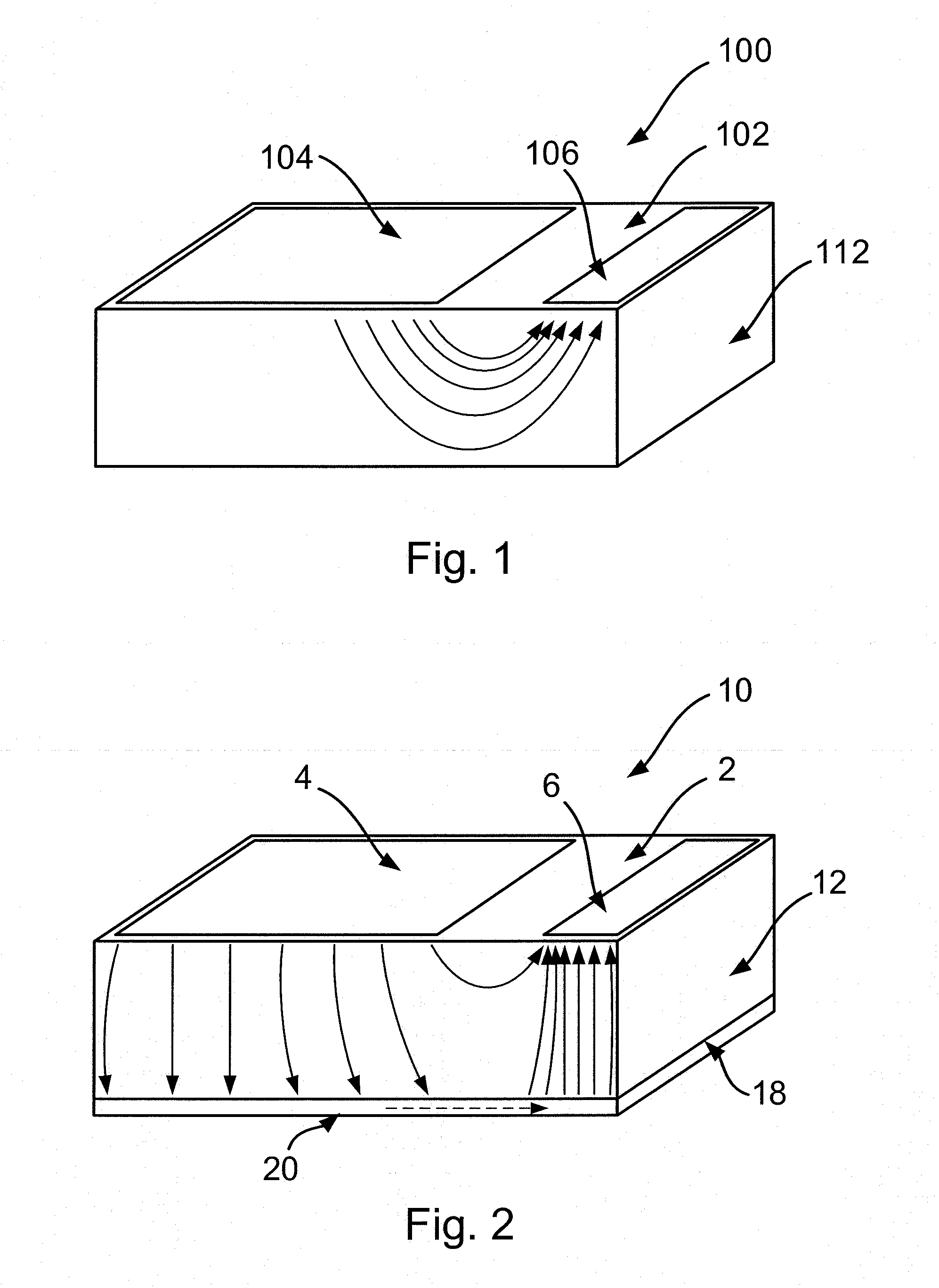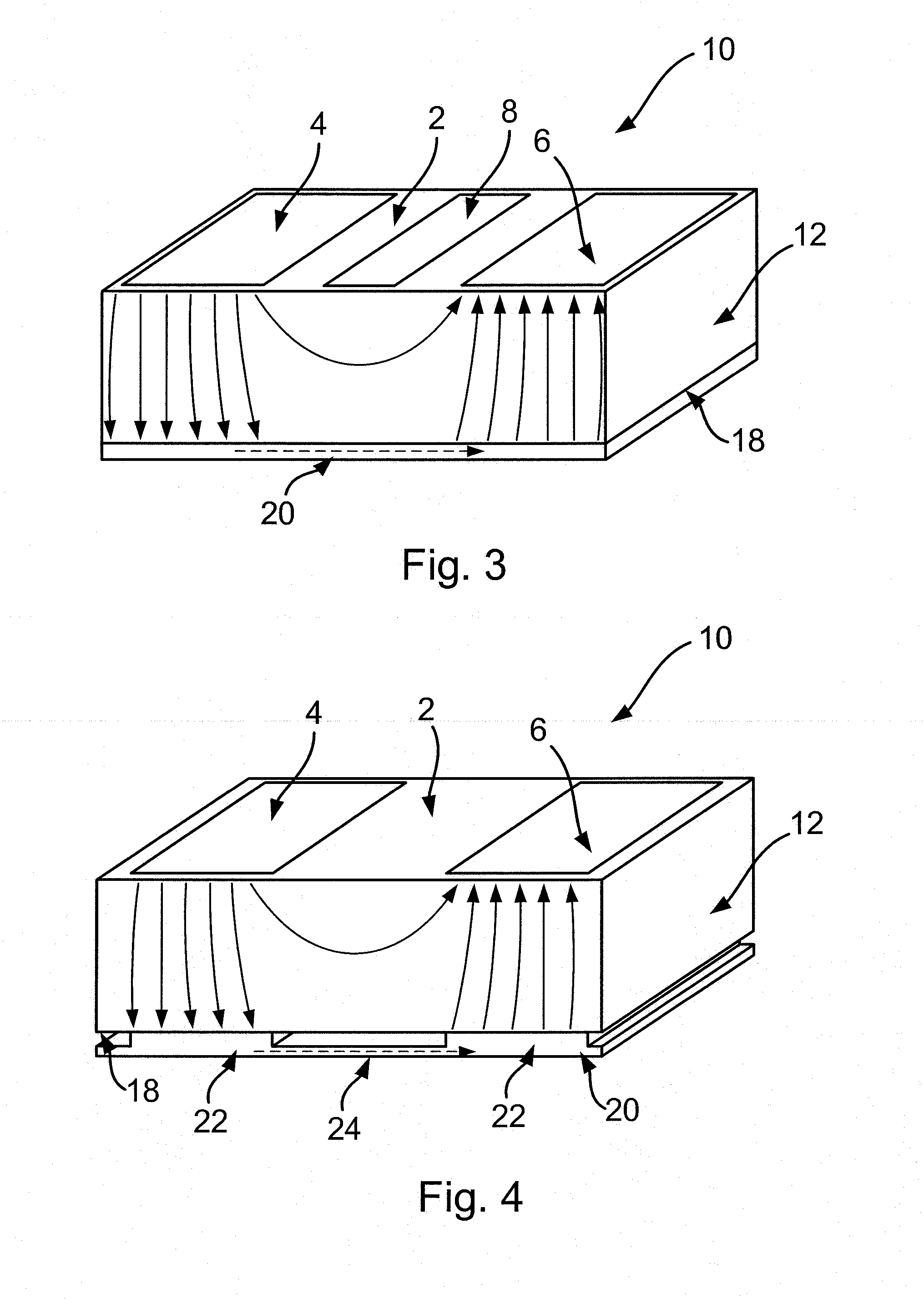Semiconductor device
- Summary
- Abstract
- Description
- Claims
- Application Information
AI Technical Summary
Benefits of technology
Problems solved by technology
Method used
Image
Examples
first embodiment
[0036]FIG. 2 shows a semiconductor device 10 according to this invention. The semiconductor device 10 includes a semiconductor substrate 12. The substrate 12 may, for example, comprise silicon or any other suitable semiconductor material. As will be described later in more detail, the substrate 12 may be a die that is diced from a larger wafer during manufacture.
[0037]In accordance with embodiments of this invention, the substrate 12 is provided in a chip-scale package (CSP). Accordingly, the substrate 12 includes a plurality of contacts that are provided on a major surface 2 thereof. In this example, the plurality of contacts includes a first contact 4 and a second contact 6. This embodiment may, for instance, include a pn-junction diode or a Schottky diode in which the first contact 4 is a cathode of the diode and the second contact 6 is an anode of the diode. As described above, the substrate 12 can be mounted on a carrier such as a printed circuit board (PCB), with the first con...
second embodiment
[0046]FIG. 3 shows a semiconductor device 10 in accordance with this invention. In this embodiment, the device 10 includes a substrate 12 that has a major surface 2 on which are provided a plurality of contacts including a first contact 4, a second contact 6 and also a third contact 8. In this embodiment, the device 10 may be a MOS transistor (for instance, a vertical MOS transistor) in which the first contact 4 is a source contact of the transistor, the second contact 6 is a drain contact of the transistor and the third contact 8 is a gate contact of the transistor. In another example, the device 10 may comprise a bipolar transistor in which the first contact 4 is an emitter contact of the transistor, the second contact 6 is a collector contact of the transistor and the third contact 8 is a base contact of the transistor.
[0047]As can be seen from the solid arrows in FIG. 3, the distribution of the current flow within the bulk of the substrate 12 in the device of FIG. 3 is generally...
PUM
 Login to View More
Login to View More Abstract
Description
Claims
Application Information
 Login to View More
Login to View More - R&D
- Intellectual Property
- Life Sciences
- Materials
- Tech Scout
- Unparalleled Data Quality
- Higher Quality Content
- 60% Fewer Hallucinations
Browse by: Latest US Patents, China's latest patents, Technical Efficacy Thesaurus, Application Domain, Technology Topic, Popular Technical Reports.
© 2025 PatSnap. All rights reserved.Legal|Privacy policy|Modern Slavery Act Transparency Statement|Sitemap|About US| Contact US: help@patsnap.com



